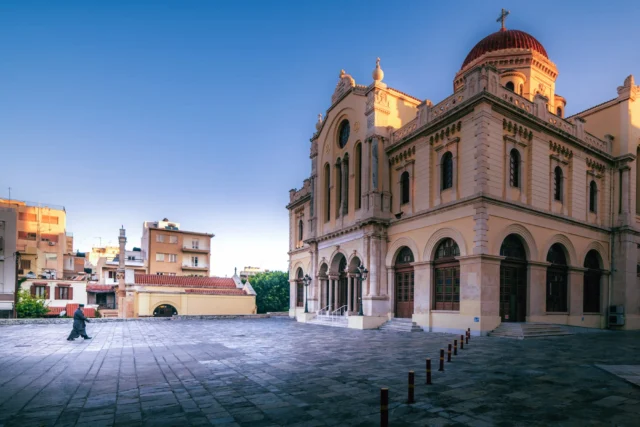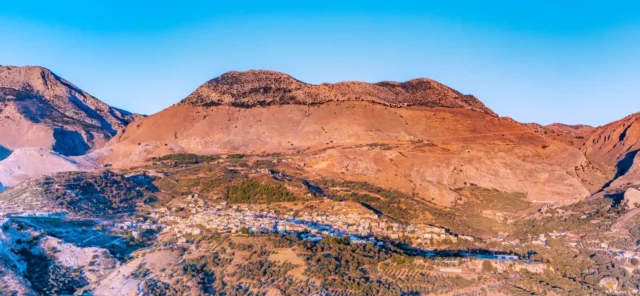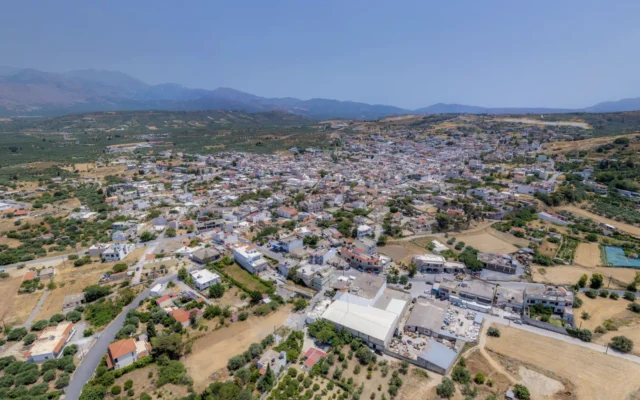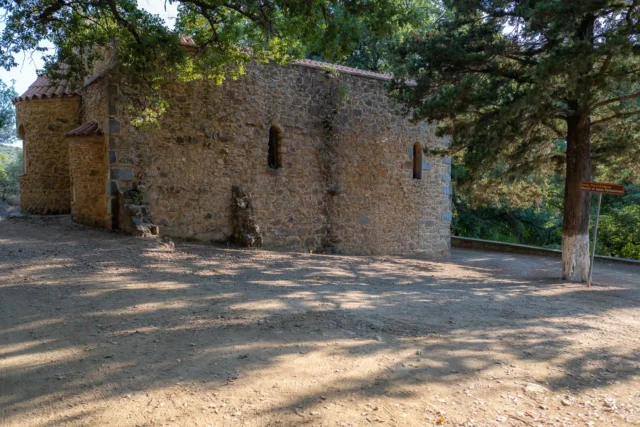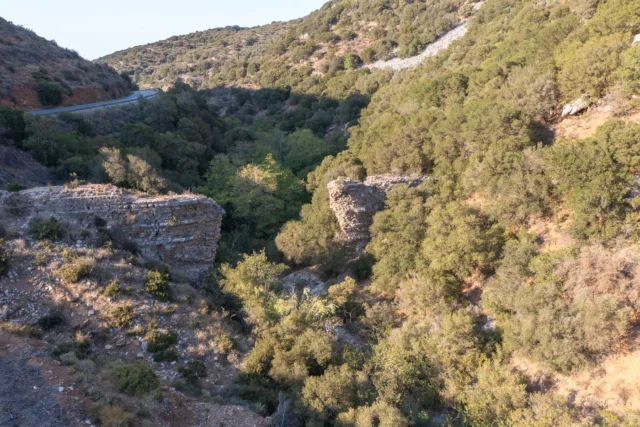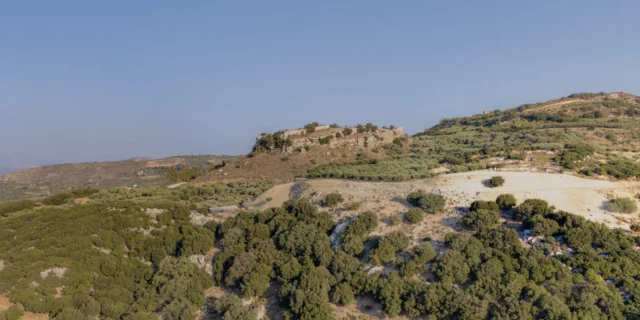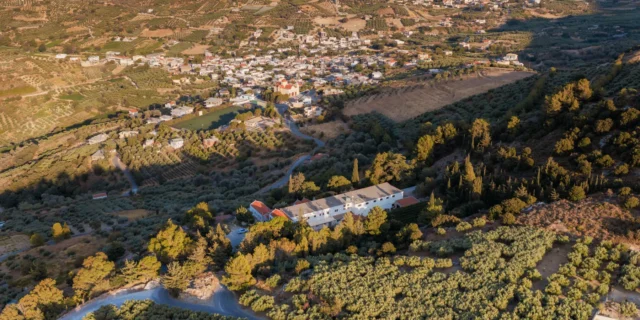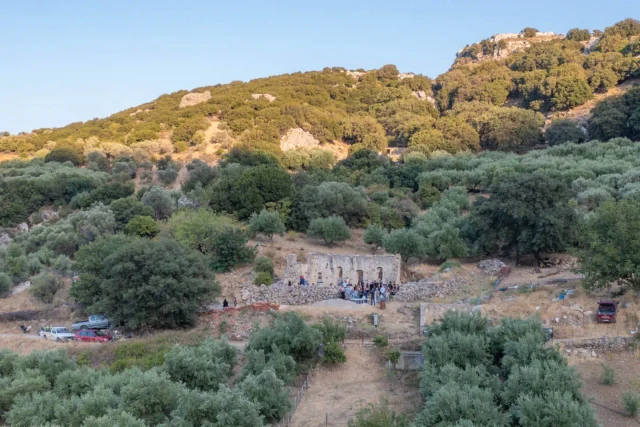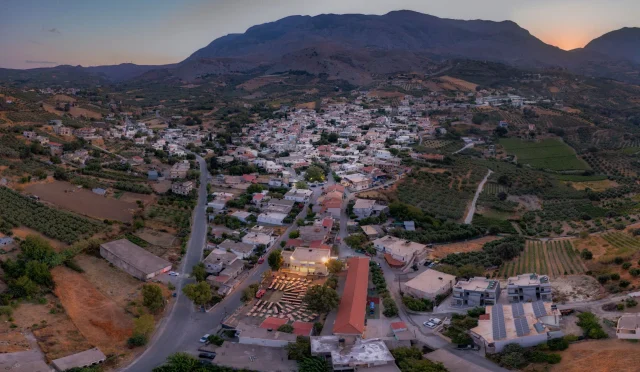415
listings found
Categories
Active filters:
Emparos, Viannos
Emparos is a settlement located in the Heraklion regional unit on the island of Crete, Greece. It belongs to the Municipality of Viannos
Damasta, Malevizi
Damasta, a Cretan village in Heraklion's Malevizi municipality, sits on Psiloritis' slopes. Known for agriculture, livestock, and honey, it's historically significant, mentioned in the 1583 Kastrofylakas census. During WWII, the village was destroyed by Germans, with 37 residents executed at Keratidi, commemorated by a monument. Damasta features Venetian-era churches like Saint Nicholas and Panagia, and Saints George and Demetrios. The village, part of the Tylisos municipality, has a folklore museum and a cultural association. Its population has fluctuated over time, from 338 in 1583 to 244 in 2011. The Damasta community includes nearby Astrino.
Tympaki, Phaistos
Tympaki, also known as Tympakion, is a town in Crete, Greece, with a rich history dating back before its official recognition in 1925. Located in the Messara plain, 65 km southwest of Heraklion, Tympaki is known for its agricultural production (olives, fruits, vegetables) and proximity to beaches like Matala. The town was destroyed during WWII and later rebuilt, influencing its architecture. Its history includes a strategic airfield used during the war, now hosting motorsports events. Nearby are the archaeological sites of Phaistos and Agia Triada. The population has grown significantly since 1900, reaching approximately 5,000 today.
Zaros, Phaistos
Zaros, a town in Crete's Heraklion region, sits on Mount Samari's slopes. Known for "Zaros" bottled water, it boasts Lake Votomos, a recreational area with trout farms, and the Gorge of Rouvas. The historic Monastery of Vrontisi and Saint Nicholas Church, featuring frescoes, are nearby. Ancient Gortyn sourced water from Zaros' Sterna spring, with Roman aqueduct remnants still visible. The 1583 Kastrofylakas census mentions Zaros. The town's economy is based on agriculture.
Pyrathi, Archanes – Asterousia
Pyrathi is a settlement located in the Heraklion regional unit on the island of Crete, Greece. It belongs to the Municipality of Archanes - Asterousia
Heraklion, Heraklion
Heraklion, the capital and largest city of Crete, is on the north coast and has served as a harbor for Knossos since the Minoan era. Its identity evolved through various names, including Chandax under Arab rule and Candia during the Venetian period, when it became a major fortress. The city is defined by the massive Venetian Walls and the Koules fortress at its harbor. It withstood the historic 22-year Siege of Candia before falling to the Ottomans. Following the union with Greece, it received Greek refugees from Asia Minor.
Krousonas, Malevizi
Kroussonas, a village in Crete's Mount Psiloritis foothills, has a long history, with records dating to 1280 and settlements back to Mycenaean/Geometric periods. Known for agriculture, especially vineyards and olive groves, the village is also involved in agritourism. Its history includes Venetian occupation, the Cretan War of Independence, and WWII resistance. The village is located 21.8 km southwest of Heraklion. Kroussonas has a population of around 2,000 and features traditional Cretan life alongside modern amenities, including schools, health facilities, and a women's agricultural cooperative.
Arkalochori, Minoa – Pediada
Arkalochori is a settlement located in the Heraklion regional unit on the island of Crete, Greece. It belongs to the Municipality of Minoa - Pediada
Rotasi, Archanes – Asterousia
Rotasi is a settlement located in the Heraklion regional unit on the island of Crete, Greece. It belongs to the Municipality of Archanes - Asterousia
Ini, Minoa – Pediada
A village and community seat in Minoa Pediada, 44km from Heraklion, believed to be the location of the ancient city of Arcadia. Arcadia was an autonomous city, allied first with Knossos and later Lyttos, with its own currency. The village was listed as Igni in the 1583 Castrofilacas census. During the Ottoman era, it was primarily inhabited by Turks. The modern community includes the settlements of Machairas and Monastiraki. The Ini Dam, a key irrigation reservoir, is next to the village.
Metochi of Kamilari
Metochi, Crete, is known as the alleged birthplace of Epimenides, an ancient sage. The village holds historical significance with its agricultural roots and traditional architecture. Plutarch's writings link Epimenides to Metochi, sparking interest in his legendary life, including his famed 57-year slumber. The area features olive groves and ancient ruins, enhancing its historical allure. Beyond its Epimenides connection, Metochi offers Cretan cuisine and access to the Mesara Plain's natural beauty.
The Agriolidis Tower in Agios Ioannis
The Agriolidis Tower in Crete: A symbol of Ottoman oppression and Cretan resistance. Learn about the notorious Agriolidis and the tower's role in the struggle for independence.
Agios Panteleimon in Bizariano
Agios Panteleimon, a Byzantine church in Crete, showcases 11th-century frescoes and unique architecture.
The Aqueduct of Chersonesos
Discover the ancient aqueduct of Chersonesos in Crete, a marvel of Roman engineering that supplied water to the city for centuries. Learn about its construction, significance, and connection to the broader Roman presence on the island.
Kastellas Hill
Kastellas Hill near Moni Gorgolaini in Kato Asites, Crete, offers historical significance and scenic views.
The Holy Monastery of Agios Georgios Gorgolaini
Discover the Holy Monastery of Agios Georgios Gorgoeleimonos in Crete, a historic site with a rich legacy of resilience, faith, and cultural preservation.
Agios Antonios in Petali
The Monastery of Agios Antonios in Petali, Crete, is a historic site dating back to the Venetian era. Explore its unique architecture, rich history, and ongoing restoration efforts.
Kato Asites, Heraklion
A village on the eastern slopes of Mount Psiloritis, 24 kilometers from Heraklion. It features the Gorgolaini Monastery, founded in 1320 and the tomb of Captain Fragias Mastrachas. The Church of Agia Paraskevi is a notable site. The Cultural Association "To Gorgolaini" preserves local heritage, organizing events that showcase traditional music and dance. The area supports professions like carpentry and jewelry, with women's cooperatives producing local food. It is a starting point for the E4 hiking path to Prinos peak.













